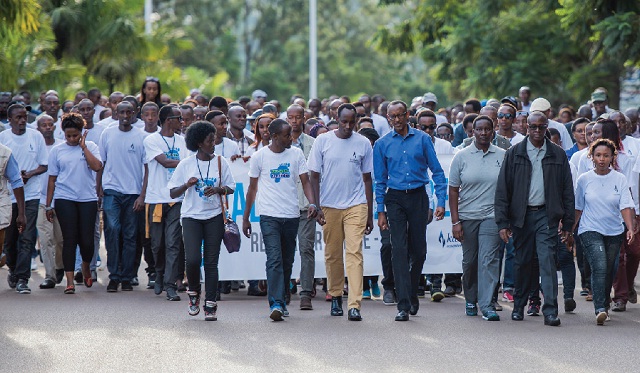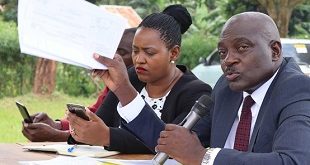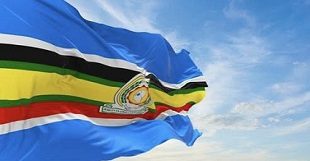
`Small idea’ by high school students has become global anti-genocide movement
Kampala, Uganda | STEPHEN NUWAGIRA & FRANCIS BYARUHANGA | A sea of dark mass captures my attention as I head towardsthe Rwandan Parliament on this cloudy Saturday evening. It’s a mass of people clad mostly in black or dark blue T-shirts,marching as if on military parade. But they march in unnerving silence and gray April evening Kigali skies accentuate the somber mood of the “Walk to Remember”. It is an annual event to commemorate the more than one million people killed during the 1994 genocide against the Tutsi.
Snaking out of the parliament building to Airport Road, thethousands march; not in protest but to mourn in remembrance of the genocide victims.
This year, the First Lady, Jeannette Kagame, is leading the mostly young people, diplomats, and government officials on the two-kilometre walk toAmahoro National Stadium. They will join over 25,000 Rwandans and friends of Rwanda gathered for a commemoration vigil.
Stockton University through MAHG & STAND hosts #Kwibuka24 to honor those killed in the 1994 genocide against Tutsi. pic.twitter.com/tLpg2qJ53r
— IRANZI JEAN PAUL (@IranziPaul) April 11, 2018
Walk to Remember, which has become one of the key activities of thegenocide commemoration week (April 7-13), dates back to 2009 when the first walk to remember event took place.
It was May 7 and a group of high school students under the Peace and Love Proclaimers (PLP) decided to march. Their aim was to educate youth about the genocide and promoting unity and reconciliation among Rwandans.
“We wanted to build a future free of divisions,” saysMark Gwamaka, the brain behind the idea, “We wanted to preach unity and reconciliation, and also empower the youth to be change agents and national builders.”
Today, the event also involves offering support; material, emotional, or spiritual to survivors.
It also seeksto highlight the role and responsibility of youth in fighting genocide and genocide ideologyamong Rwandans.It shows survivors that “you are not alone; the country and its youth care and support you through this hard period and always.”
Back before 2009, there were few campaigns promoting unity and forgiveness, especially among the young people.Gwamaka’sidea was philosophically simple: when we walk together, people will ask us what we are up to and the answer will be“we are walking to remember”.
“It’s a symbolic walk from our bad history to where we want to be as a country,” he adds. And as the participants walk, the silence encourages meditation.
 The Independent Uganda: You get the Truth we Pay the Price
The Independent Uganda: You get the Truth we Pay the Price


